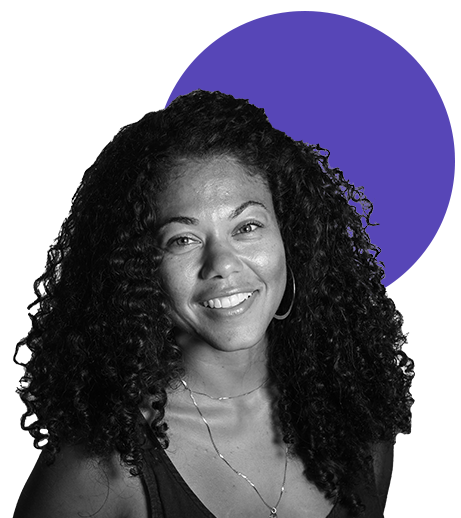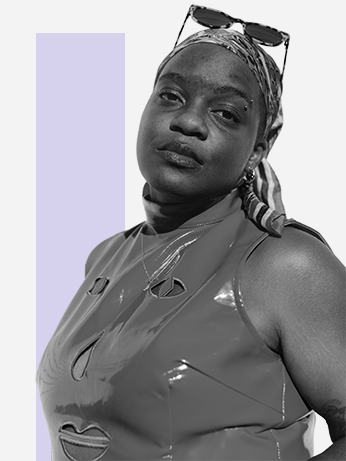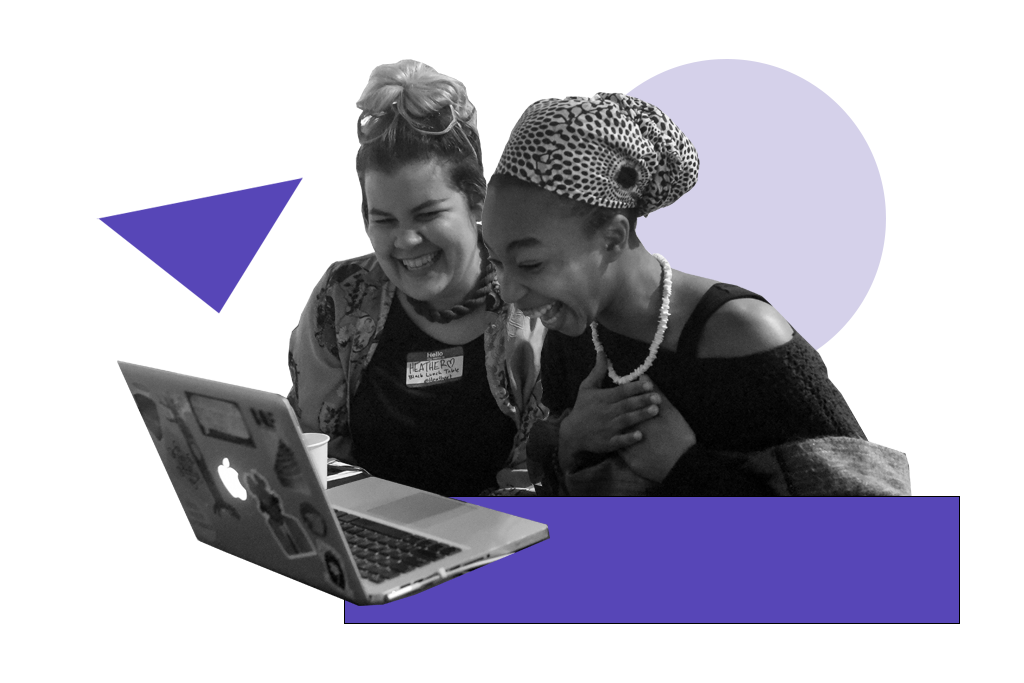The school lunchroom can conjure up all kinds of memories. For the founders of the non-profit Black Lunch Table (BLT), it brought inspiration.
The lunchroom offers a shared space for people to come together and connect. Black Lunch Table aims to replicate this experience. Since its founding in 2005, the oral history archiving project has brought people together to engage in dialogue on a variety of critical issues relating to the lives and work of Black artists. The ultimate goal? To fill the gaps that exist in the documentation of contemporary art history.
Starting in 2014, Black Lunch Table found a new platform for closing these gaps: Wikipedia. When the group started writing articles about the lives and works of Black artists, important figures such as Fred Moten, Meschac Gaba, Peggy Cooper Cafritz, and Valerie Cassel Oliver were all missing.
Today, these and hundreds of other artists are included in the online encyclopedia, thanks to BLT initiatives such as edit-a-thons and the Photo Booth project to increase images of Black artists on Wikimedia Commons.
I recently sat down with two of the group’s organizers, Eliza Myrie and Kearra Gopee, to talk about the history of Black Lunch Table and their new partnership with Pace Gallery in New York.
Q: What inspires you to be part of Black Lunch Table?

Eliza Myrie
Eliza: As an artist myself, I am very big on supporting and cultivating a community with artists. One question I ask myself is how can we better support one another. This is where Black Lunch Table comes in. A big portion of our project is writing biographies for other artists because the artists can’t do it themselves [editor’s note: see Wikipedia’s conflict of interest policy]. This means it’s up to each of us to help advocate for artists, whether that’s improving their article or increasing their notability through posting a photo of their work or themselves.

Kearra Gopee
Kearra: As a photographer and videographer, my practice is very social, and an aspect of Black Lunch Table is helping people realize their potential and ability to write on Wikipedia to further help the visibility of artists. My interest in writing for Wikipedia started with BLT and then my first edit-a-thon. I ended up sticking around because of all the interesting aspects of editing – like the little gaps in a page preventing it from being made or how we can inspire someone to write about something that already exists.
![]()
It’s up to each of us to help advocate for artists, whether that’s improving their article or increasing their notability through posting a photo of their work or themselves.
Q: We often talk about knowledge gaps on Wikipedia, but we don’t always do enough to celebrate the wins. Can you share one knowledge equity win that Black Lunch Table is particularly proud of?
Eliza: We’ve come a long way when it comes to how and why we write and update Wikipedia articles. One we are particularly proud of is that Black Lunch Table has managed to use Wikidata to aggregate a running task list of artists that need their pages created or improved. This has become a critical tool for us to be able to collect data, and it is something that allows us to visualize the growing need for articles that are unwritten. Currently, the list includes over 1,400 artists, and it continues to grow.
Kearra: Wikidata is not something most Wikimedia groups lead with as it is considered a relatively newer way of editing. But we try to keep up with Wikidata as it helps make a person more credible and searchable– adding information such as their age, education, and more leads to a higher chance of their article not being proposed for deletion. We look forward to improving our work within Wikidata and introducing it across our events and edit-a-thons.
Q: Black Lunch Table is currently working with Pace Gallery. Can you tell us more about that?
Eliza: Yeah! This is our inaugural Wikimedia fellowship that we have developed with Pace Gallery over the past year and a half. This new partnership came out of the thought: Wouldn’t it be great if we could have a Wikimedian-in-residence who could archive Pace Gallery’s personal collection and make it more accessible to the public?
Pace Gallery currently has over 11,000 volumes of essays, monographs, and art books that Kristen Owens, Wikimedia fellow and librarian, is currently curating via a reading room that will be open to the public from February 2 – 25.
With this partnership, we hope to improve bibliographies of Black artists and spark critical conversations on accessibility to historical knowledge and how that accessibility is different across marginalized communities.
![]()
Wouldn’t it be great if we could have a Wikimedian-in-residence who could archive Pace Gallery’s personal collection and make it more accessible to the public?
Q: What are some easy ways someone can get involved with Black Lunch Table?
Kearra: Running through February 28th, we are hosting a national BLT Bingo contest to increase information about Black artists across Wikimedia platforms. Contestants are asked to fill out the bingo card by creating new qualifying articles on Wikipedia for 5 artists of their choice. Once you submit your bingo card, you qualify to win up to $75. This is a great and easy way to get involved in editing.
Eliza: If photos are more of your thing, we’ve made the BLT Photo Booth DIY version, which gives a chance for anybody with a camera to take pictures of notable Black artists (you can find a list of them here) and upload these photos to Wikimedia Commons to increase their visibility online.
Learn more about Black Lunch Table and get involved at blacklunchtable.com.
. . .
Does the content on Wikipedia reflect the world’s diversity?
Every day, volunteers all over the world—like the ones featured on this blog—work on knowledge equity initiatives to help close knowledge gaps. Want to understand why this work matters? Watch this video, part of our A Wiki Minute series, to learn more.
. . .
This blog is part of Open the Knowledge: Stories, a series which features volunteers from the Wikimedia movement who are helping the world truly find the sum of all human knowledge on Wikimedia projects. If you want to know more about what knowledge equity is, why it matters, and how you can help us achieve it, join us at Open the Knowledge.
. . .
This interview has been edited for clarity and length.
Barbara Kandek is a Communications Associate at the Wikimedia Foundation.


